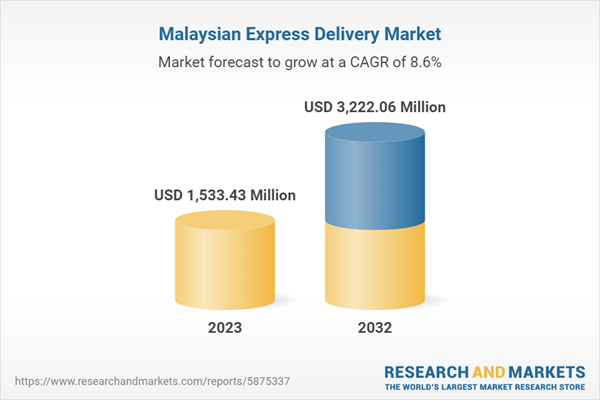With an impressive 89% internet penetration rate, Malaysia boasts one of the highest rates of internet usage in Southeast Asia. The growth of e-commerce in the country is primarily driven by a burgeoning population of digitally savvy middle-class individuals who seek value deals and access to international brands.
The annual gross merchandise sales value of Malaysia's e-commerce market has demonstrated a remarkable upward trajectory from 2019 to 2022, with an impressive CAGR of 67.11% during this period, as per analysis. The COVID-19 pandemic significantly impacted shopping behavior as lockdown measures prevented residents from traditional brick-and-mortar shopping, leading to a surge in demand for online shopping. Consequently, Malaysia's e-commerce gross merchandise sales witnessed substantial growth in both 2020 and 2021, with increases of 166.7% and 62.50%, respectively. In 2022, the total value of Malaysia's e-commerce merchandise sales reached an impressive $14 billion, marking a moderate increase with a year-on-year growth rate of 7.69%.
Given the growing number of middle-class households and the expanding e-commerce market, the analyst anticipates that Malaysia's express delivery industry will continue to thrive in the coming years. The sector is poised to reach a market size of $3.22 billion in 2032, experiencing a Compound Annual Growth Rate (CAGR) of 8.6% over the period from 2023 to 2032.
Topics covered:
- Malaysia Express Delivery Industry Overview
- Economic and policy environment of the express delivery industry in Malaysia
- What is the impact of COVID-19 on the Malaysian express delivery industry?
- Malaysia Express delivery industry Market Size, 2023-2032
- Analysis of Major Malaysian Express Industry Players
- Key Drivers and Market Opportunities in Malaysia's Express delivery industry
- What are the key drivers, challenges and opportunities for the express delivery industry in Malaysia during the forecast period 2023-2032?
- Which are the key players in the Malaysia Express delivery industry market and what are their competitive advantages?
- What is the expected revenue of Malaysia Express delivery industry Market during the forecast period of 2023-2032?
- What strategies have been adopted by the key players in the market to increase their market share in the industry?
- Which segment of the Malaysia express delivery industry market is expected to dominate the market by 2032?
- What are the major disadvantages faced by the express delivery industry in Malaysia?
Table of Contents
Companies Mentioned
Pos Laju- Pos Malaysia
- GD Express Sdn Bhd
- City-Link Express
- Kangaroo Worldwide Express
- Skynet Worldwide
- ABX Express
- Nationwide Express Courier Services Bhd
- DHL
- FedEx
- UPS
Methodology
Background research defines the range of products and industries, which proposes the key points of the research. Proper classification will help clients understand the industry and products in the report.
Secondhand material research is a necessary way to push the project into fast progress. The analyst always chooses the data source carefully. Most secondhand data they quote is sourced from an authority in a specific industry or public data source from governments, industrial associations, etc. For some new or niche fields, they also "double-check" data sources and logics before they show them to clients.
Primary research is the key to solve questions, which largely influence the research outputs. The analyst may use methods like mathematics, logical reasoning, scenario thinking, to confirm key data and make the data credible.
The data model is an important analysis method. Calculating through data models with different factors weights can guarantee the outputs objective.
The analyst optimizes the following methods and steps in executing research projects and also forms many special information gathering and processing methods.
1. Analyze the life cycle of the industry to understand the development phase and space.
2. Grasp the key indexes evaluating the market to position clients in the market and formulate development plans
3. Economic, political, social and cultural factors
4. Competitors like a mirror that reflects the overall market and also market differences.
5. Inside and outside the industry, upstream and downstream of the industry chain, show inner competitions
6. Proper estimation of the future is good guidance for strategic planning.

LOADING...
Table Information
| Report Attribute | Details |
|---|---|
| No. of Pages | 60 |
| Published | September 2023 |
| Forecast Period | 2023 - 2032 |
| Estimated Market Value ( USD | $ 1533.43 Million |
| Forecasted Market Value ( USD | $ 3222.06 Million |
| Compound Annual Growth Rate | 8.6% |
| Regions Covered | Malaysia |
| No. of Companies Mentioned | 11 |









